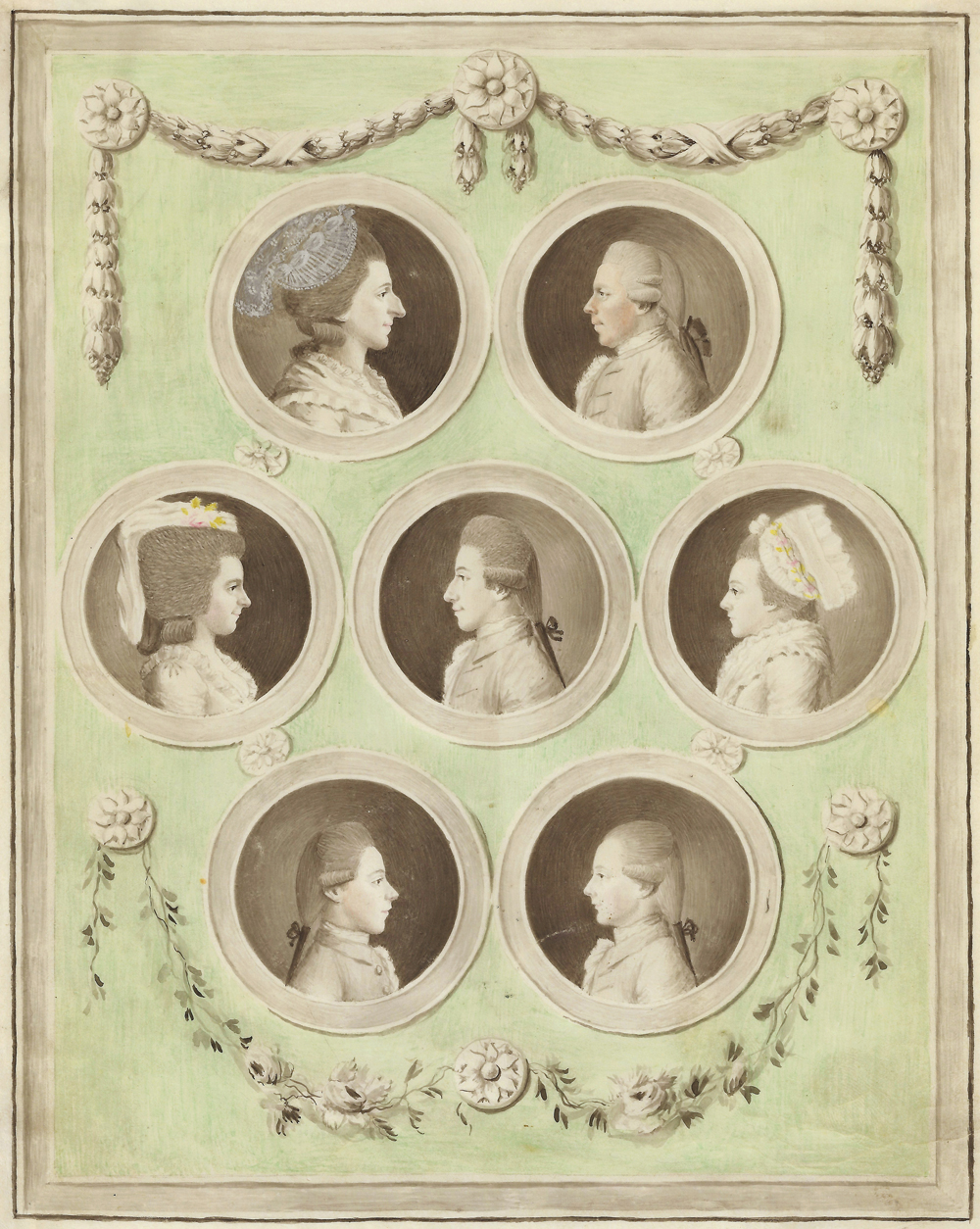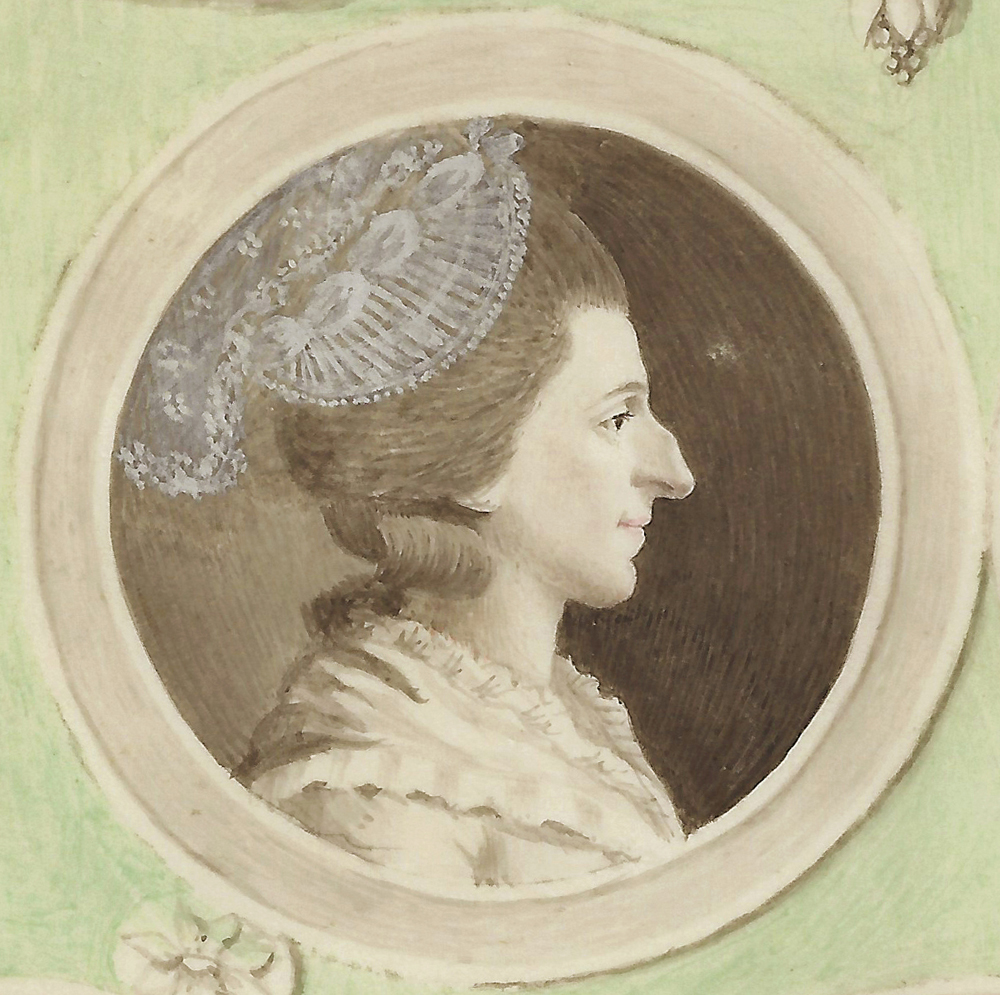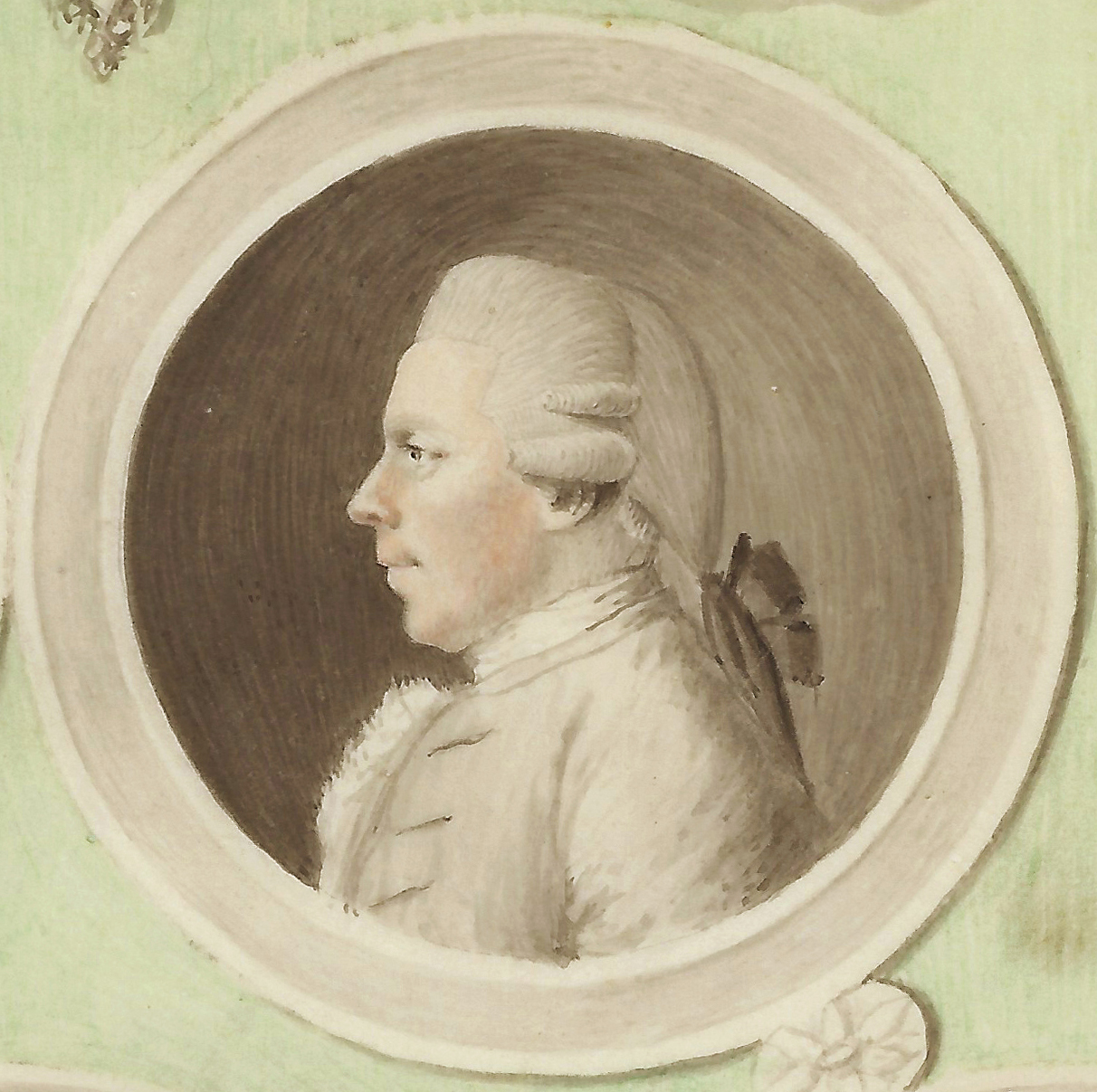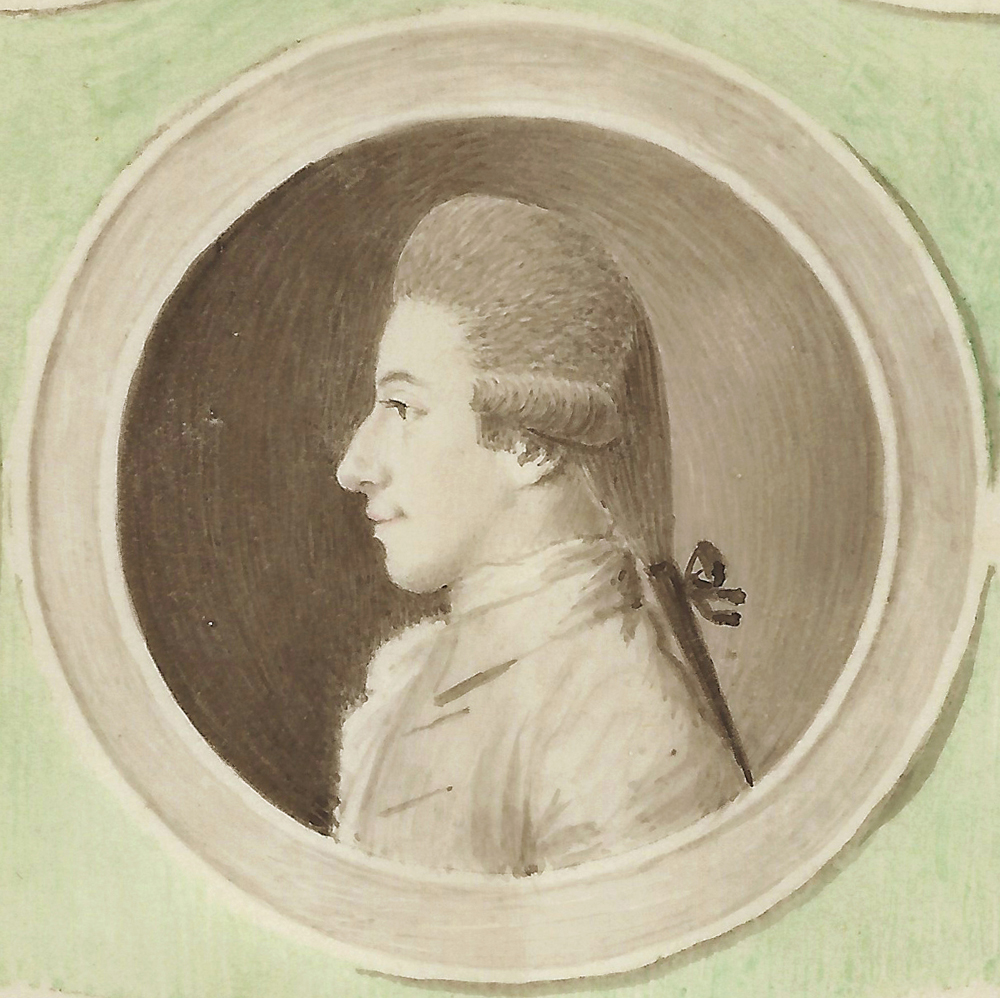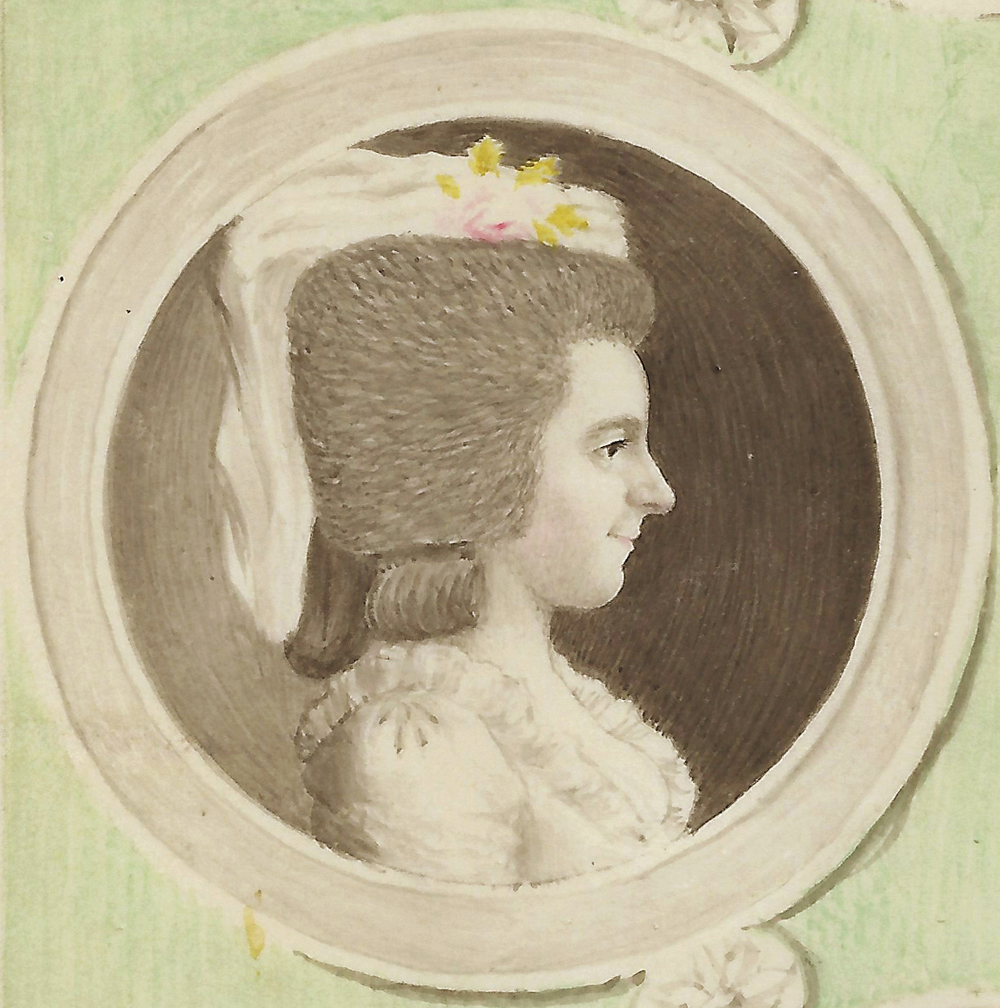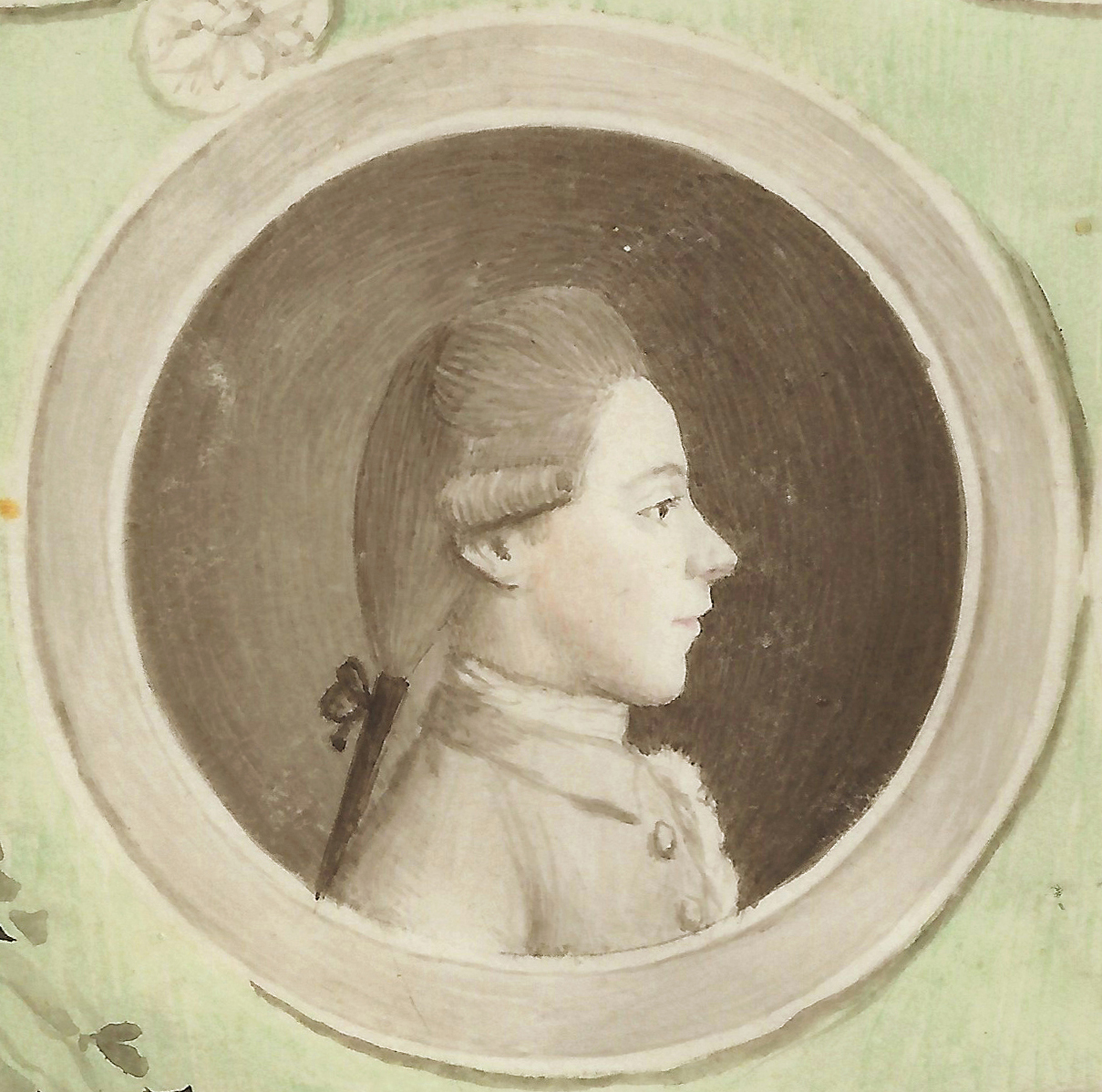KARL LUDWIG FERNOW (Blumenhagen/Uckermark 1763 – 1808 Weimar)
Karl Ludwig Fernow (Blumenhagen/Uckermark 1763 – 1808 Weimar)
Seven Portraits in Medallion of Members of a Family in an Ornamental Surround
Pen in grey ink, wash in grey, red, yellow and green, heightened in white, on vellum, 220 x 175 mm (8.7 x 6.9 inch)
Provenance
Private collection, Germany
***
This charming watercolour depicting a couple with their five children, three sons and two daughters, dates from c. 1780 and was done by Karl Ludwig Fernow. The artist was born in Pomerania, the son of a servant in the household of the lord of Blumenhagen. At the age of twelve he became clerk to a notary, and was afterwards apprenticed to a druggist. While serving his time he had the misfortune accidentally to shoot a young man who came to visit him; and although through the intercession of his master he escaped prosecution, the untoward event weighed heavily on his mind, and led him at the close of his apprenticeship to quit his native place. He obtained a situation at Lübeck, where he had leisure to cultivate his natural taste for drawing and poetry. Having formed an acquaintance with the painter Asmus Jacob Carstens (1754–1798), whose influence was an important stimulus and help to him, he renounced his trade of druggist, and set up as a portrait-painter and drawing-master.
At Ludwigslust he fell in love with a young girl, and followed her to Weimar; but failing in his suit, he went next to Jena. There he was introduced to Professor Reinhold, and in his house met the Danish poet Jens Immanuel Baggesen. The latter invited him to accompany him to Switzerland and Italy, a proposal which in 1794 he eagerly accepted for the sake of the opportunity of furthering his studies in the fine arts. On Baggesen's return to Denmark, Fernow, assisted by some of his friends, visited Rome and made some stay there. He now renewed his intercourse with Carstens, who had settled at Rome, and applied himself to the study of the history and theory of the fine arts and of the Italian language and literature. Making rapid progress, he was soon qualified to give a course of lectures on archaeology, which was attended by the principal artists then at Rome. Having married a Roman lady, he returned in 1802 to Germany, and was appointed in the following year professor extraordinary of Italian literature at Jena.
In 1804 he accepted the post of librarian to Amalia, Dowager Duchess of Weimar, which gave him the leisure he desired for the purpose of turning to account the literary and archaeological researches in which he had engaged at Rome. His most valuable publication, the Romische Studien, appeared in three volumes between 1806 and 1808. Among his other works are Das Leben des Kunstlers Carstens (1806), Ariostos Lebenslauf (1809), and Francesco Petrarca (1818). A memoir of his life by Johanna Schopenhauer, mother of the philosopher, Arthur Schopenhauer, appeared in 1810, and a complete edition of his works in 1829.
It is interesting to see how the artist has managed to convey the characters of the seven family members portrayed here. Fernow’s surviving drawings are exceedingly rare. A comparable sheet with eight oval portraits of Duke Friedrich Franz von Mecklenburg-Schwerin (1756–1837), his wife Luise and six of their children, signed and dated 1791, is preserved in the Kunsthalle, Hamburg (fig.).1 The Hamburg work, which cost the Duke one Louis d’Or, dates from the time of Fernow’s move from Ratzeburg to Weimar, when he was an active and successful portraitist in miniature,2 and our drawing is likely to date from the same period.
SOLD
1. Graphite and bodycolour on prepared paper, 388 x 272 mm; inv. no. 1950-107; Peter Prange, Deutsche Zeichnungen 1450-1800, Sammlungen der Hamburger Kunsthalle Kupferstichkabinett, Cologne/Weimar/Vienna 2007, vol. I, p. 163, no. 320; vol. II, p. 163, fig. 320.
2. Herman Riegel, Carl Ludwig Fernow: Carstens, Leben und Werke, Hannover 1867, p. 9.
